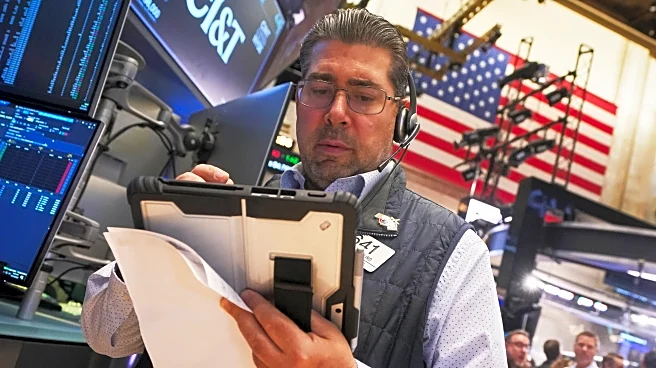What's Happening?
Goldman Sachs' chief U.S. economist, Jan Hatzius, has raised concerns about the accuracy of current U.S. GDP growth estimates, which show a 3.8% increase in Q2 and a 3.3% rise in Q3. Hatzius argues that
these figures may be overly optimistic due to missing data from the recent government shutdown and weakening labor market trends. He points to falling employment indicators and survey data that suggest stagnation or contraction in the job market. Despite a stock market rally, Hatzius warns that employment issues could undermine the positive economic outlook. The labor market tightness tracker, which includes various employment metrics, has eased to 2016 levels and continues to decline.
Why It's Important?
The potential overstatement of GDP growth has significant implications for economic policy and market expectations. If the labor market is indeed weaker than GDP figures suggest, it could lead to adjustments in monetary policy, such as further interest rate cuts by the Federal Reserve. This situation also highlights the challenges faced by younger workers and the impact of AI adoption on labor demand. A weaker job market could dampen consumer spending and overall economic growth, affecting businesses and investors who rely on accurate economic forecasts for decision-making.
What's Next?
As the labor market continues to show signs of weakness, policymakers and economists will closely monitor employment data to reassess economic growth projections. The Federal Reserve may consider additional rate cuts to support the economy if labor market conditions do not improve. Businesses may also need to adapt to changing labor dynamics, particularly with the increasing influence of AI on job availability and skills requirements.












